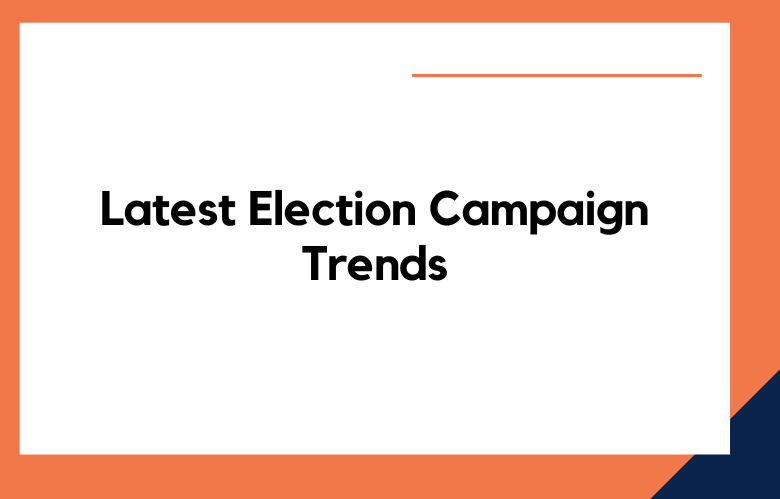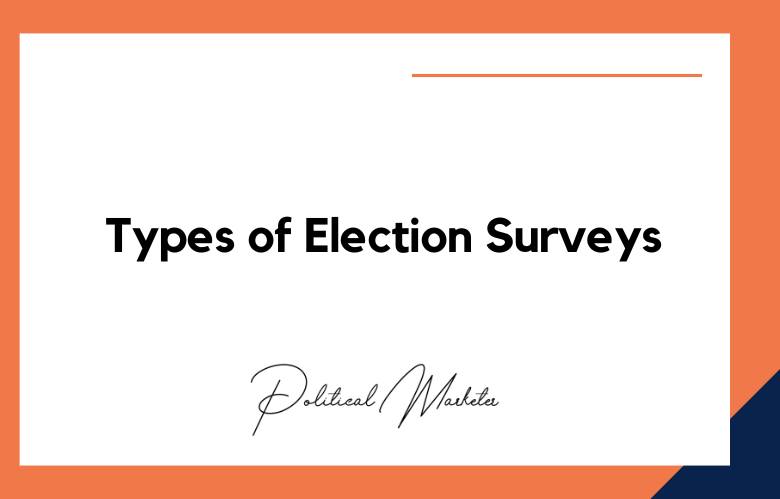Election campaigning isn’t just about shaking hands and kissing babies anymore. As technology advances and the world becomes more social-media-driven, political leaders need to keep up with the latest trends and strategies to reach the hearts and minds of their voters.
We’ll explore the latest election campaign trends for political leaders, from data-driven strategies to targeted social media campaigns.
Election Campaign Trends for Political Leaders
Data-Driven Campaigns:
In today’s political landscape, data is king. Political leaders use data science to understand their voters’ sentiments and craft campaigns that resonate with them. The process involves using artificial intelligence, data mining, and machine learning to collect and analyze vast amounts of data.
This includes voter behavior, social media activity, and public response. With this information, politicians can tailor their message, adjusting their focus and pitch to address voters’ pain points.
Influence Marketing:
Influence marketing, a marketing technique that uses individuals’ influence to support a brand, is fast becoming a must-have for political campaigns.
In this strategy, political leaders partner with key opinion leaders or influencers in their communities to spread their message among their followers.
The influencers endorse the politician and help promote their message through social media and other channels. These endorsements are potent testimonies that sway voters to support the political leader.
Personalized Communications:
With technological advancements, political leaders have multiple channels to engage with their voters, including email, social media, and mobile apps.
Over the past few years, a notable shift has occurred towards personalized communications, where individuals receive tailored messages that address their specific interests.
Some of these messages include personalized event invitations, calls to action, and thank you messages that encourage individuals to rally behind the candidate.
Social Media Targeting:
Social media has become the go-to strategy for political campaigns over the past decade.
However, it’s no longer enough to post tweets or Facebook updates and hope they go viral. Today’s political campaigns use social media platforms’ targeting features to reach specific audiences.
Facebook, in particular, allows political campaigns to target based on location, interests, and job titles. This further increases political leaders’ chances of reaching potential voters and delivering their message.
Virtual Events:
The COVID-19 pandemic has made it nearly impossible for political leaders to hold traditional rally events. Virtual events have become the go-to alternative for political campaigns to engage supporters.
Virtual rallies and town halls allow political leaders to engage with supporters through online platforms such as Zoom or Facebook Live. The events can then be shared and amplified on social media platforms, allowing even more individuals to participate.
The Latest Election Campaign Trends for Political Leaders: Staying Ahead of the Curve
With the advent of election season, political campaigns have already begun to heat up worldwide.
Political leaders and their teams are hard at work, strategizing new ways to connect with voters and win their support. In this ever-evolving arena, campaigns need to be innovative to gain traction.
The latest election campaign trends can help political leaders rise above the noise and stand out in their race. We delve into the latest election campaign trends for political leaders making waves and recommend how to use them to refine your election campaign strategy.
Tactics That Win Votes: Analyzing the Latest Election Campaign Trends
In today’s fast-paced political landscape, election campaigns are becoming increasingly sophisticated and complex.
The latest trends have revealed a shift towards a more data-driven approach to winning votes, with candidates and political parties leveraging advanced analytics to define their messaging and target specific voter demographics.
One key tactic that has emerged in recent years is using social media platforms such as Facebook, Twitter, and Instagram to reach voters on a massive scale.
Through social media, candidates can promote their message, interact with voters, and even fundraise at unprecedented levels. Targeted ads, often fuelled by data analytics, have enabled candidates to reach voters based on their age, location, interests, and political leanings.
Political Leaders in the Digital Age: Embracing the Latest Election Campaign Trends
Political leaders in the digital age increasingly embrace the latest election campaign trends as technology significantly shapes the political landscape.
With the rise of social media and digital marketing techniques, political campaigns can now reach audiences on a scale never before possible.
One of the most significant trends in the digital age of politics is the use of social media platforms. Social media has become a vital tool for political campaigns, providing a platform for candidates to reach a large, engaged audience.
Facebook, Twitter, Instagram, and other social media platforms are being used to share campaign messages, engage with voters, and build a sense of community among supporters.
Mastering the Art of Persuasion: Latest Election Campaign Trends
In today’s competitive world of politics, there is no denying the power of persuasion. Persuading voters to support a particular candidate or party is not an easy feat, but it can be achieved with the right tactics and techniques.
The latest election campaign trends have shown that mastering the art of persuasion is essential for political success.
One of the most critical trends in election campaigns is social media. Social media has become a powerful tool for politicians to reach out to voters, particularly the younger generation.
Platforms like Facebook, Twitter, and Instagram have enabled candidates to connect with voters, share their vision and policies, and collaborate with supporters.
Social media campaigns have been a game-changer in recent elections, with many candidates using creative tactics such as hashtags, memes, and live streams to reach out to their followers and create buzz around their campaigns.
The Rise of Microtargeting: Latest Election Campaign Trends Unveiled
In recent years, microtargeting has emerged as a popular and effective technique in election campaign strategies.
It refers to using data-driven insights and advanced algorithms to segment voters into small groups based on their demographics, interests, behavior patterns, and psychographic profiles.
This allows political parties and candidates to tailor their messages and outreach efforts to these microsegments and connect with voters more personally.
The rise of microtargeting can largely be attributed to the increasing use of digital media and social networks in political campaigns.
With millions of people active on social media platforms like Facebook, Twitter, and Instagram, political teams can quickly obtain vast information on voters, including their characteristics, political leanings, social connections, and online activity.
This valuable information enables them to create highly targeted campaigns that speak directly to the concerns and needs of individual voters in specific regions, income brackets, age ranges, etc.
Conclusion:
election campaign trends have evolved significantly in our digital age. Political leaders can engage with voters more effectively using a mix of data-driven insights, influence marketing, personalized communication, social media targeting, and virtual events.
By keeping up with these innovative trends, political leaders stand a better chance of captivating their audience and winning votes on the ballot box.
Call: +91 9848321284
Email: [email protected]










